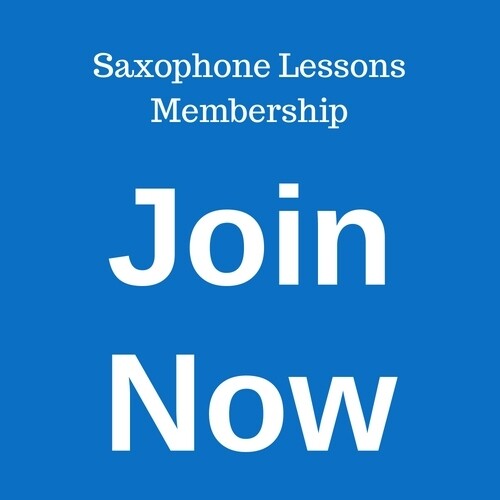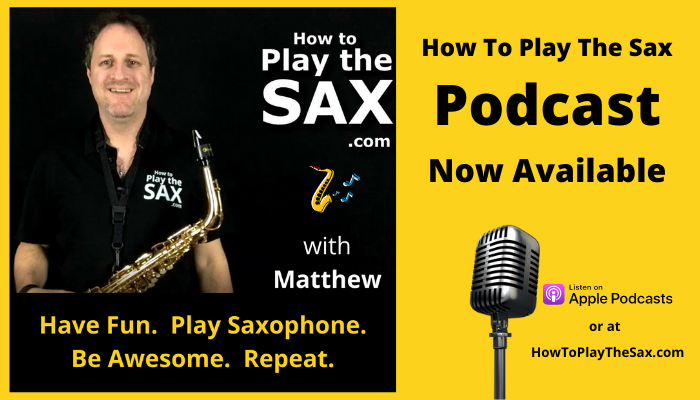Learning Saxophone – Crawl, Walk, Run
I had an interesting conversation with a student of mine the other day about learning saxophone. I decided that I would share the thought process here, because I feel that it will be relevant to everyone learning how to play the saxophone.
When it comes to learning saxophone – or any musical instrument – there are a few fundamentals that need to be put into place before you can be the rock star that you deservedly wish to become.
The old saying of “you must be able to crawl before you can walk, and walk before you can run” is a valid analogy when it comes to learning saxophone.
Hot Cross Buns and Mary Had A Little Lamb are NOT really going to provide you with much musical satisfaction, nor fame, nor fortune. In fact, as adults or older students, these songs are potentially rather tedious. I know. And I’m sorry !!
However, the reason I start with these two songs is because everyone knows them.
If you can hear a song in your head, and you know it backwards, forwards and inside out, then, depending on the song, it might not take too much time to learn how to play it on your saxophone.
These two songs therefore become a “quick win”. A beginner saxophonist who has just started learning saxophone will get some satisfaction and a feeling of accomplishment.
The students thought process then becomes:
“Hey, if I can play these songs, I wonder what other songs I can play ?”
The student then can see what is possible and push on and try something different.
Hot Cross Buns and Mary Had A Little Lambs are, however, “crawling” as per the analogy above.
Once you can “crawl”, then you can “walk”. This transition is actually relatively easy, especially from a musical perspective.
Getting a couple of quick scales under your fingers – especially C Major, D Major, E Major, F Major and A Major – then gets you “walking”.
“Walking” opens up a whole heap of really good songs, some of which I have featured and will continue to feature as I add more songs inside our Saxophone Lessons Members Area here at HowToPlayTheSax.com .
At this point, “running” then becomes one possible musical goal. There are other potential musical goals when learning saxophone, such as “jogging” or “skipping” for example.
“Running”, to me, means being able to play the sax solos that your favourite bands and musicians play on their recordings easily and almost without thinking.
“Running” means being able to play the songs that YOU want to play, when YOU want to play them.
“Running” means being able to play the notes that YOU want to play, in the order that you want to play them, when YOU want to play them.
The student with whom I had the conversation the other day is aiming to be able to play a specific (and actually rather complex) song by a set date – approx 10 months from now. This specific song is important to my student and is to be played at a happy and significant family event. What a fantastic and totally achievable goal !!
Go for it, I say !!!!!! YES, YES, YES, YES !!!!!! YOU CAN DO THIS !!!!!!!!!!!!!!!
However, some understandable frustration has crept in for this student, who has only owned a saxophone for approximately two weeks and only played a recorder in primary school 20 years ago. For all intents and purposes, this student is a brand new beginner with zero musical experience, but is excited and enthusiastic about learning saxophone !
Learning how to play the saxophone involves co-coordinating and controlling fingers, mouths, tongues, breath, ears, sometimes eyes, and brains. All at once. Preferably without falling over.
It is my opinion that “learning saxophone” and “learning how to play one specific song on the saxophone” are two separate but equally valid concepts.
“Learning saxophone”, to me, is about being able to play all the notes in any order and in any possible rhythm.
“Learning saxophone”, to me, involves being able to translate notes and concepts from one song to another song, from one musical genre to another musical genre, to adapt and hear and listen and react to what others (such as guitarists, or drummers, or singers or keyboard players) are doing around you.
“Learning how to play a specific song on the saxophone”, to me, is a specific once off and once only goal.
Your favourite song, your special song, a specific song that has meaning to you or someone else that you wish to play it for, is a worthy and fantastic goal to work towards.
Potentially, however, “Learning how to play a specific song on the saxophone” right from the start of your saxophone journey may be rather limiting in your future musical options and opportunities.
Don’t play saxophone while driving.
Here in Melbourne, Australia where I live, a learner driver needs to get a minimum of 120 hours of documented driving practice and experience before they can get their probationary drivers license and drive their car on the roads by themselves. And even then they are subject to severe restrictions for the next two years.
The logic with this is so that the learner driver can get experience with all kinds of driving in all sorts of situations – light, dawn, dusk, dark, wet, dry, fast, slow, main roads, back streets, city driving, country driving, etc, etc.
As a father to a late teenage learner driver, I agree with and support this concept fully.
The end result of all of this driving is a driver who knows how to drive in any and all conditions. They will get to where they want to go, safely.
Yes, we could show the learner driver the steering wheel, the go pedal and the stop pedal. Yes, we could then drag them (at first) around a race track to solidify the idea. Yes, we could then practice driving at speed around Albert Park lake in preparation for the Australian Formula One Grand Prix. Yes, they could then actually drive their car really fast, participate in the race and probably not even crash their car.
However, then what happens once the race is over ?
They have no experience of “real driving”. What is this stop sign ? What is this double line printed on the road ? How do I fill the car with petrol ? Hang on, why are other cars coming at me from the opposite direction on the same road ?!!?
The same concept applies to learning saxophone.
Having the experience in all musical conditions – fast, slow, with or without other musicians (either live or recordings), different notes in different sequences and in different styles, high notes, low notes, the names of the notes, how to play each note in each situation – then allows the saxophonist to adapt and apply what they know to other situations.
Jumping in and playing the one specific and difficult song can be done.
However, crawling first, then walking, then walking some more, then walking uphill and downhill, then walking for an hour, then two hours, then three hours in the one session, THEN running, will allow anyone learning saxophone to play pretty much what ever they want.
Learning the notes, learning some easy songs, learning some harder songs, then learning some difficult songs means that at some point in the not too distant future ANY song becomes easy.
“Learning saxophone” and “learning how to play one specific song on the saxophone” are two separate concepts.
One sets the beginner saxophonist up for potentially a lifetime of enjoyment and musical opportunities – even if these are mostly in the students lounge room at home. The other has an end date.
There is no right or wrong here. You do you. Each to their own.
I am merely trying in my own special way to point out the difference.
I have no doubt in my mind that my student will blow the crowd away on the night at the gig, with an amazing show of awesomeness.
The song inside my students heart will leap out of the saxophone and shine upon the audience.
My student obviously has the goal, the courage, the motivation and the drive to succeed.
I forget sometimes that I’ve been playing saxophone for 35 years and I’ve loved every minute of it. I fully expect to play my saxophone for another 35 years and beyond. Not everyone has the desire to do this.
But everyone wants to play the saxophone in some capacity….or they should…. 😉
Everyone’s goals and motivations for learning saxophone are different. And that’s ok !
I will happily support and help all of my students with their learning saxophone goals.
However, for long term learning saxophone success, we just need to crawl, then walk, first.
Thanks,
Matthew
P.S. Please also remember the golden rule – Have Fun. Play Saxophone. Be Awesome. Repeat.
P.P.S What are your saxophone goals ? Are you “learning saxophone” or “learning how to play a specific song on the saxophone” ? Let me know in the comments below !
Not a member yet ? Join us and get access to the always increasing library of saxophone lessons and PDF cheat sheets.
P.P.S.S. If you would like simple step by step instructions to help you learn how to play the saxophone:
- all neatly organised in the one convenient location,
- all provided by an experienced saxophone teacher who can help you to play the music that YOU want to play quickly and easily,
then check out our saxophone lessons membership options. Get started on your saxophone journey today !
Remember – I can help you learn How To Play The Sax 🙂
YES – I want to Have Fun, Play Sax, Be Awesome and Repeat !







Would you like 7 FREE BEGINNER SAXOPHONE LESSONS ?
Enter your name and email address and we'll send you some useful sax hints, tips - and your 7 free beginner saxophone lessons - delivered directly to your email inbox :-)
You are on your way to becoming AWESOME ! Please check your inbox :-)
We will never spam you. Ever. Have Fun. Play Saxophone. Be Awesome. Repeat.